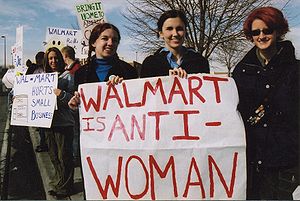Margaret Hancock has long considered the local Wal-Mart Stores Inc. (WMT) superstore her one- stop shopping destination. No longer.
During recent visits, the retired accountant from Newark, Delaware, says she failed to find more than a dozen basic items, including certain types of face cream, cold medicine, bandages, mouthwash, hangers, lamps and fabrics.
The cosmetics section “looked like someone raided it,” said Hancock, 63.
Wal-Mart’s loss was a gain for Kohl’s Corp. (KSS), Safeway Inc. (SWY), Target Corp. (TGT) and Walgreen Co. (WAG) -- the chains Hancock hit for the items she couldn’t find at Wal-Mart.
“If it’s not on the shelf, I can’t buy it,” she said. “You hate to see a company self-destruct, but there are other places to go.”
It’s not as though the merchandise isn’t there. It’s piling up in aisles and in the back of stores because Wal-Mart doesn’t have enough bodies to restock the shelves, according to interviews with store workers. In the past five years, the world’s largest retailer added 455 U.S. Wal-Mart stores, a 13 percent increase, according to filings and the company’s website. In the same period, its total U.S. workforce, which includes Sam’s Club employees, dropped by about 20,000, or 1.4 percent. Wal-Mart employs about 1.4 million U.S. workers. Read more >>


No comments:
Post a Comment